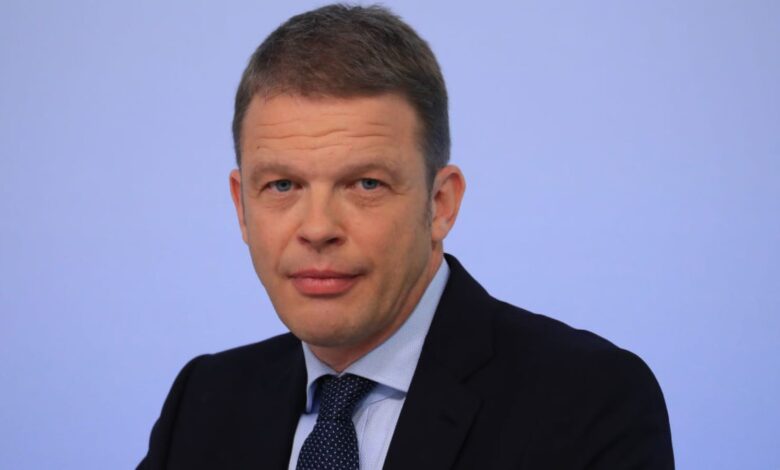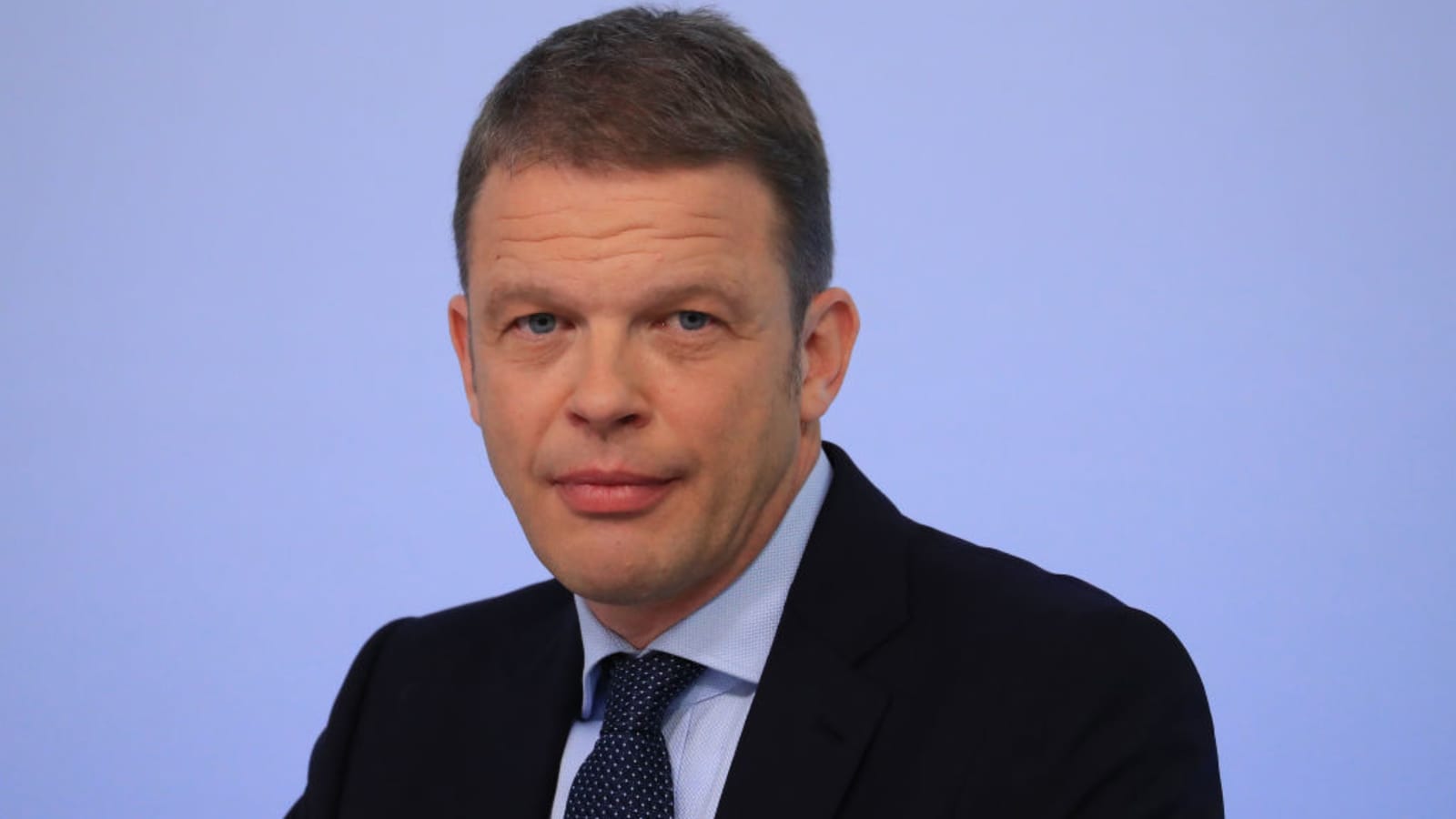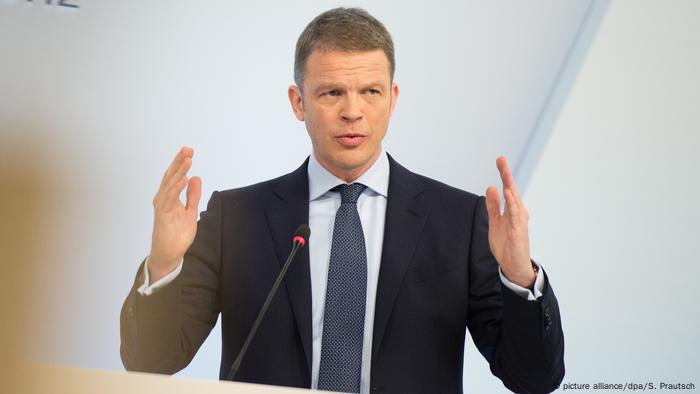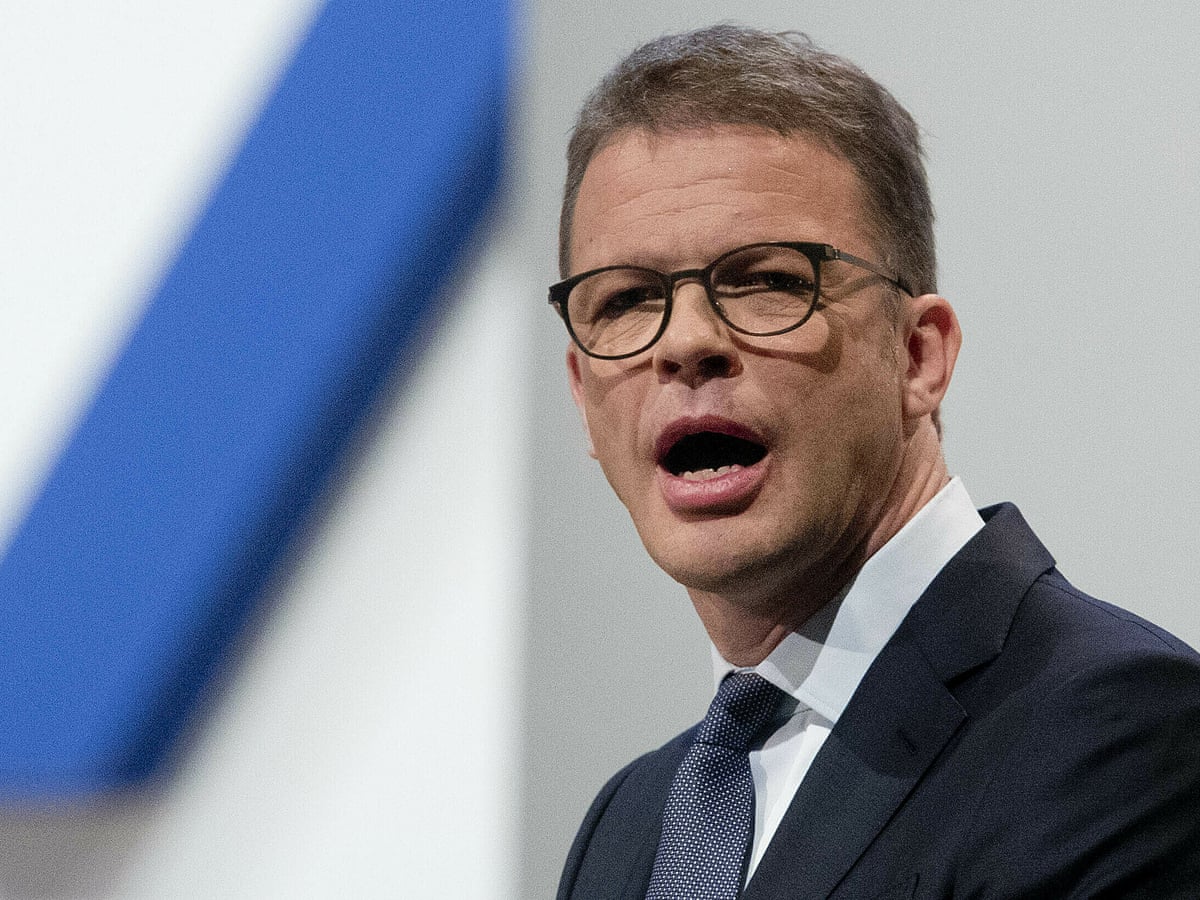IN THE MIDST OF GLOBAL ECONOMIC UNCERTAINTY, INDIA IS A SHINING STAR: DEUTSCHE BANK CEO CHRISTIAN SEWING

India will be the “shining star” of the world’s frugality, which will witness a decade of insecurity due to conflict, affectation, and force chain interruptions. New Delhi may ease design perpetration to draw in further foreign investment, however. According to Deutsche Bank’s CEO, Christian Sewing, large portions of the connected global frugality would presumably have to endure a period of difficulty as central banks reduce liquidity and increase interest rates to combat affectation since failing to do so might irreparably harm agriculture.
“I have watched India evolve—a development our country can be proud of,” Sewing said in an exclusive interview. Many other countries, particularly those in Europe, are observing India and preparing for its major future. There is always room for growth. But India shines out as a ray of hope as I scan the globe.
We then want to grow and make investments. It is a frantic appeal. Sewing joins other top fiscal chief directors like Jane Fraser of Citigroup and Jamie Dimon of JPMorgan in recognizing India’s underlying capacity to profit from a change in globalization patterns where multinational pots are shifting force chains away from China despite escalating geopolitical dangers.
Although the population, request, and structure of the nation continue to be crucial appeal factors, many suppose that India still has a long way to go before it can contend with its northern neighbor in soliciting transnational manufacturing enterprises. According to the CEO of Deutsche Bank, affectation is still the topmost peril, and central banks must address it first, even if doing so compromises profitable prospects for many more days or times.
We must endure some suffering, but Sewing asserted that the sooner we combat affectation, the sooner we will exit depression.”Or else, you will get into a pay envelope-price curl that takes two to three times to pull out of, and that gets problematic,” the economist said.
After times of recovery from the Global Financial Crisis, Germany’s largest lender is still steady and strong, despite queries about the survival of institutions and a swell in rates that have shaken the fiscal requests. ” Everything is going well. Our profit increased to its highest position since 2011 in the first half of 2022, according to Sewing.
What are Deutsche Bank’s advantages? We have a clear fiscal distance, cost restraint, and business-side attention to contend with where we exceed. Working with Deutsche Bank formerly again makes me proud. We work in a field where your only means are your guests and workers. Last month, the CEO of Deutsche Bank stated that Germany is on the verge of a recession.
According to Christian Sewing, CEO of Deutsche Bank AG, Europe’s largest economy is on the verge of collapsing as a result of rising prices, energy scarcity, and the disruption of global force networks. Sewing prognosticated that “we will no longer be suitable to help a recession in Germany.”
If the central banks act swiftly and strongly, we suppose our frugality is sturdy enough to ride this recession successfully. According to Sewing, “the pressure and the liability of societal strife increase the longer affectation is high.” When the European Central Bank meets later this week, interest rates are anticipated to climb dramatically. Economists anticipate a hike of over 75 basis points in the standard cost of borrowing.
A complete halt to Russian gas shipments, according to Sewing, would shoot Germany into a recession. Indeed, while they anticipate government intervention to lessen the blow, several institutions, including Commerzbank AG, have stated they will need to strain lending conditions in the event of the script. Sewing stated on Wednesday that he anticipates a gradation rise in credit defaults, albeit the lender hasn’t noticed them yet and does not anticipate them to affect profitability.
As prices and enterprises’ over energy force erode confidence, German manufacturing orders dropped for a sixth successive month in July Although Chancellor Olaf Scholz’s administration proposed 65 billion euros in new measures to assist consumers and businesses in dealing with the stress, judges say it will not be enough to prevent a recession.
S&P Global’s exertion indicator from last week revealed that manufacturers were decelerating throughout most of the euro area as a result of consumers’ declining spending power. According to Sewing, the energy extreme and force constraints have made it clear that Germany needs to reduce its reliance on other nations. We must help ourselves by not adding access to finance as a new reliance on our current reliance on gas, raw coffers, and force networks.
We mustn’t give foreign banks a disproportionate quantum of access to the global fiscal requests, he stressed. That ideal requires European cohesion, he added. Although the foreseen issues aren’t new, he noted that they were getting increasingly critical. During the same conference, the CEO of UniCredit SpA, which conducts a large portion of its business in Germany, stated that he still expects any recession in the alternate half of the year to be brief.
The primary estimates of GDP released on May 31, 2022, show that the Indian frugality has completely recovered to its pre-pandemic real GDP position of 2019 – 20.8.7 real GDP growth is projected for FY 2021–22, which is 1.5 times faster than real GDP growth for FY 2019–20. These figures reflect a faster rate of growth instigation, implying advanced profitable demand. In the most recent nine digs, the fourth quarter saw a rise in the investment rate.

Also, manufacturing sector capacity applications increased in the fourth quarter compared to the third quarter, indicating a buildup in demand that’s compatible with the Indian frugality’s development pretensions. It’s envisioned that factors including duty buoyancy, a streamlined duty system, comprehensive examination and optimization of the tariff structure, and digital duty form would promote unborn government capital expenditures in the Indian frugality.
Over the medium term, growth multipliers are anticipated to increase as capital investments in structure and asset-structure systems rise. The return of the thunderstorm and Kharif sowing aided the increase in the agricultural sector. As of July 11, 2022, the South-West thunderstorm has fully ringed the country and was responsible for 7 further inches of rain than average.
India has emerged as the nation with the highest rate of growth and the most robust republic in the world because to these factors. Within the next 10 to 15 years, India is predicted to rank among the top three lucrative nations in the world. India’s austerity is often fueled by domestic demand, with consumption and investment making up 70% of the country’s total profitable labor. The nation has made a number of investments and improvements in a number of lucrative fields as it has recovered from the COVID-19 pandemic shock.
According to the World Bank, India must continue to prioritize reducing inequality while simultaneously enforcing growth-aware programs to stimulate frugality. The Indian government has launched several programs over the years to boost the frugality of the country. The government has done a good job of creating laws and programs that help residents enhance their fiscal stability as well as the frugality of their overall growth.
India’s recent rapid and lucrative rise has resulted in a huge surge in the demand for exports. Additionally, a number of the most well-known government initiatives, like as Make in India, Start-up India, Digital India, the Smart City Mission, and the Atal Mission for Rejuvenation and Urban Transformation, are focused on creating huge implicit in India. Numerous foreign businesses are setting up operations in India as a result of numerous government initiatives including Make in India and Digital India.
The Indian Prime Minister, Mr. Narendra Modi, launched the “Make in India” action to increase the country’s manufacturing effectiveness and increase the purchasing power of the average Indian consumer, which would further drive demand and promote growth while serving investors. The Indian government is working to increase the manufacturing sector’s contribution to frugality, intending to increase it from its current 17 to 25.
Also, the government has launched the Digital India plan, which emphasizes three main areas: the development of digital infrastructure, adding digital knowledge, and The Minister of Finance & Corporate Affairs, Ms. Nirmala Sitharaman, delivered the Union Budget for 2022–2023 on February 1st, 2022. Inclusionary Development, Productivity Enhancement and Investment, Financing of Investments, and PM GatiShakti were the four pretensions listed in the budget.
To stimulate frugality, effective capital spending is anticipated to rise by 27.68 lakh crore(US$142.93 billion) in the Union Budget 2022–23. This will account for 4.1 of the entire Gross Domestic Product( GDP). By March 31, 2022, 15 accounts with bad debts of over Rs. 5,000 crores(US$6.89 billion) would be acquired by the National Asset Reconstruction Company Ltd. ( NARCL).
The agreement procedure will be overseen by India Debt Resolution Company Ltd. ( IDRCL). This will ameliorate the fiscal sector of India, encourage liquidity, and strengthen the country’s frugality. Profitable exertion in India is holding up better than anticipated despite patient geopolitical worries, rising interest rates in the US and India, high costs for crude oil painting and many other goods, and rising interest rates in both countries.
The rate of profitable exertion has entirely recovered from the COVID-19 epidemic shock, according to electricity consumption, manufacturing PMI, exports, power force, and other high-frequency pointers. The effective prosecution of PLI programs, the expansion of renewable energy sources while diversifying import reliance on crude oil, and the support of the banking sector are anticipated to propel profitable growth.
The effective prosecution of PLI programs, the growth of renewable energy sources while diversifying import reliance on crude oil, and the backing of the fiscal sector are anticipated to propel profitable growth. The current account deficit will worsen as a result of recent government attempts to increase income, and any possible popular slippage will be effectively addressed.
The first 10 days of July and June were, on average, better than the first two months of the fiscal year 2022–23, which provides consolation and, in fact, a cautious stopgap during these tough times. India is predicted to have the third-largest consumer frugality, according to a Boston Consulting Group (BCG) assessment, as its consumption may triple to US $ 4 trillion by 2025 as a result of changes in consumer behavior and spending habits. India is predicted to overtake the US in 2040 to become the second-largest consumer in terms of buying power equality, according to a PricewaterhouseCoopers pro
edited and proofread by nikita sharma



